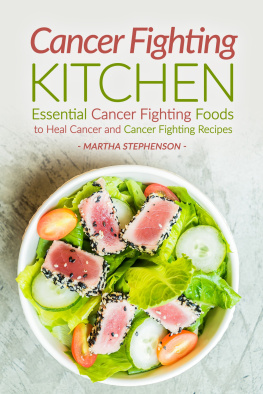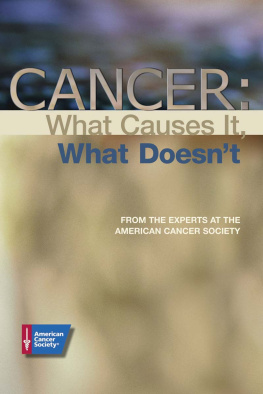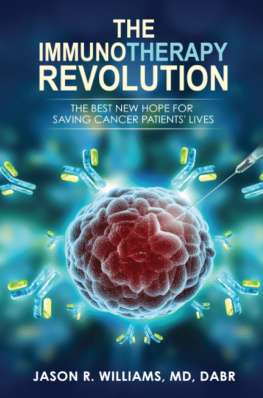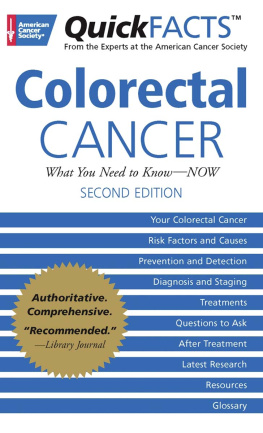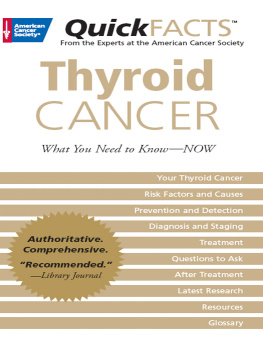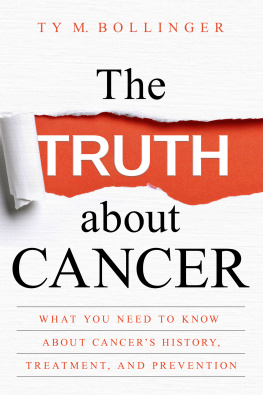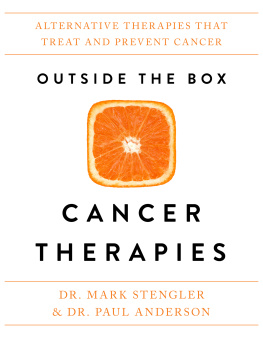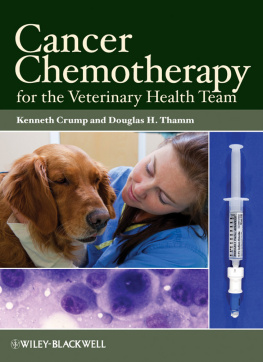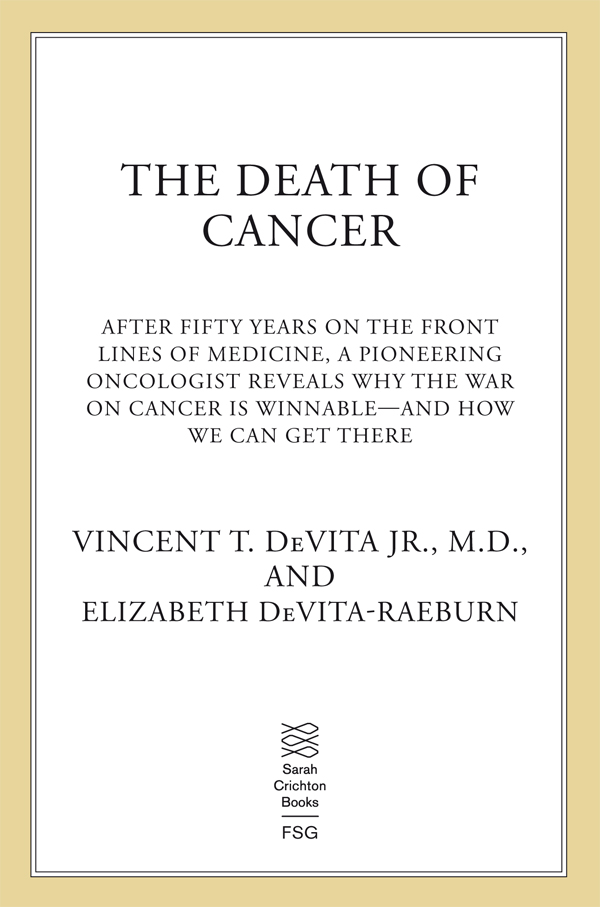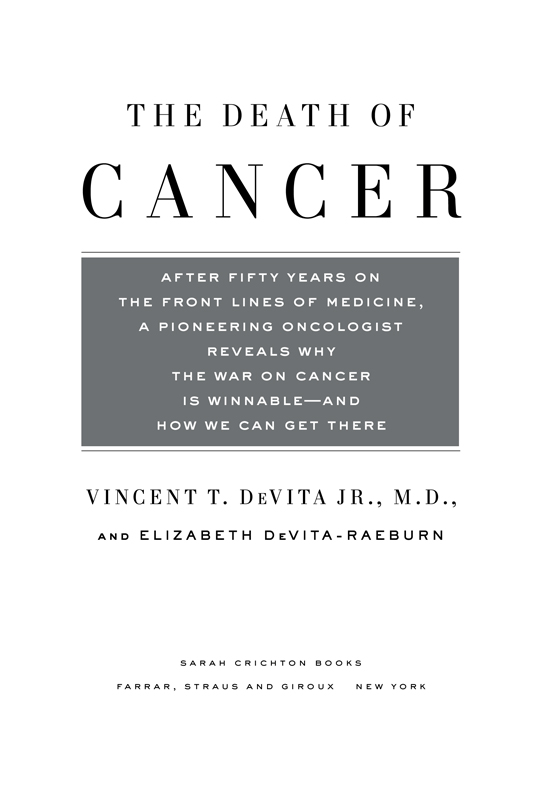Vincent T. DeVita - The Death of Cancer: After Fifty Years on the Front Lines of Medicine, a Pioneering Oncologist Reveals Why the War on Cancer Is Winnable--and How We Can Get There
Here you can read online Vincent T. DeVita - The Death of Cancer: After Fifty Years on the Front Lines of Medicine, a Pioneering Oncologist Reveals Why the War on Cancer Is Winnable--and How We Can Get There full text of the book (entire story) in english for free. Download pdf and epub, get meaning, cover and reviews about this ebook. year: 2015, publisher: Sarah Crichton Books, genre: Detective and thriller. Description of the work, (preface) as well as reviews are available. Best literature library LitArk.com created for fans of good reading and offers a wide selection of genres:
Romance novel
Science fiction
Adventure
Detective
Science
History
Home and family
Prose
Art
Politics
Computer
Non-fiction
Religion
Business
Children
Humor
Choose a favorite category and find really read worthwhile books. Enjoy immersion in the world of imagination, feel the emotions of the characters or learn something new for yourself, make an fascinating discovery.

- Book:The Death of Cancer: After Fifty Years on the Front Lines of Medicine, a Pioneering Oncologist Reveals Why the War on Cancer Is Winnable--and How We Can Get There
- Author:
- Publisher:Sarah Crichton Books
- Genre:
- Year:2015
- Rating:5 / 5
- Favourites:Add to favourites
- Your mark:
The Death of Cancer: After Fifty Years on the Front Lines of Medicine, a Pioneering Oncologist Reveals Why the War on Cancer Is Winnable--and How We Can Get There: summary, description and annotation
We offer to read an annotation, description, summary or preface (depends on what the author of the book "The Death of Cancer: After Fifty Years on the Front Lines of Medicine, a Pioneering Oncologist Reveals Why the War on Cancer Is Winnable--and How We Can Get There" wrote himself). If you haven't found the necessary information about the book — write in the comments, we will try to find it.
Cancer touches everybodys life in one way or another. But most of us know very little about how the disease works, why we treat it the way we do, and the personalities whose dedication got us where we are today. For fifty years, Dr. Vincent T. DeVita Jr. has been one of those key players: he has held just about every major position in the field, and he developed the first successful chemotherapy treatment for Hodgkins lymphoma, a breakthrough the American Society of Clinical Oncologists has called the top research advance in half a century of chemotherapy. As one of oncologys leading figures, DeVita knows what cancer looks like from the lab bench and the bedside. The Death of Cancer is his illuminating and deeply personal look at the science and the history of one of the worlds most formidable diseases. In DeVitas hands, even the most complex medical concepts are comprehensible.
Cowritten with DeVitas daughter, the science writer Elizabeth DeVita-Raeburn, The Death of Cancer is also a personal tale about the false starts and major breakthroughs, the strong-willed oncologists who clashed with conservative administrators (and one another), and the courageous patients whose willingness to test cutting-edge research helped those oncologists find potential treatments. An emotionally compelling and informative read, TheDeath of Cancer is also a call to arms. DeVita believes that were well on our way to curing cancer but that there are things we need to change in order to get there. Mortality rates are declining, but Americas cancer patients are still being shortchangedby timid doctors, by misguided national agendas, by compromised bureaucracies, and by a lack of access to information about the strengths and weaknesses of the nations cancer centers.
With historical depth and authenticity, DeVita reveals the true story of the fight against cancer. The Death of Cancer is an ambitious, vital book about a life-and-death subject that touches us all.
Vincent T. DeVita: author's other books
Who wrote The Death of Cancer: After Fifty Years on the Front Lines of Medicine, a Pioneering Oncologist Reveals Why the War on Cancer Is Winnable--and How We Can Get There? Find out the surname, the name of the author of the book and a list of all author's works by series.

